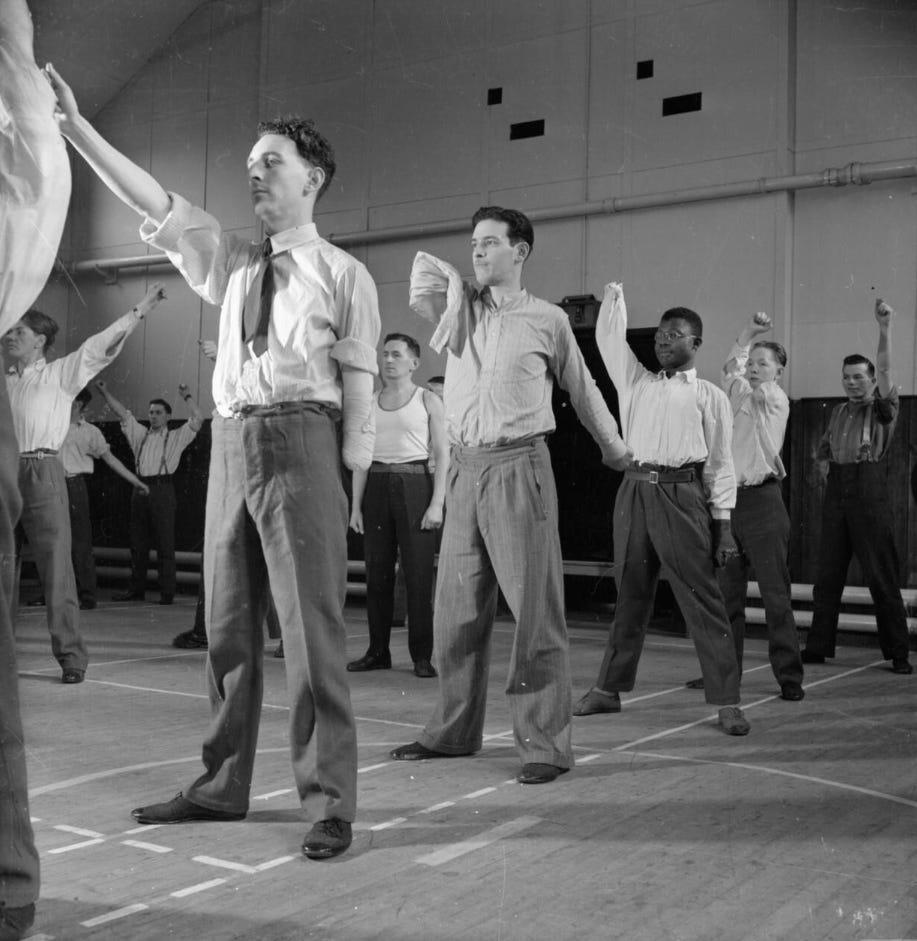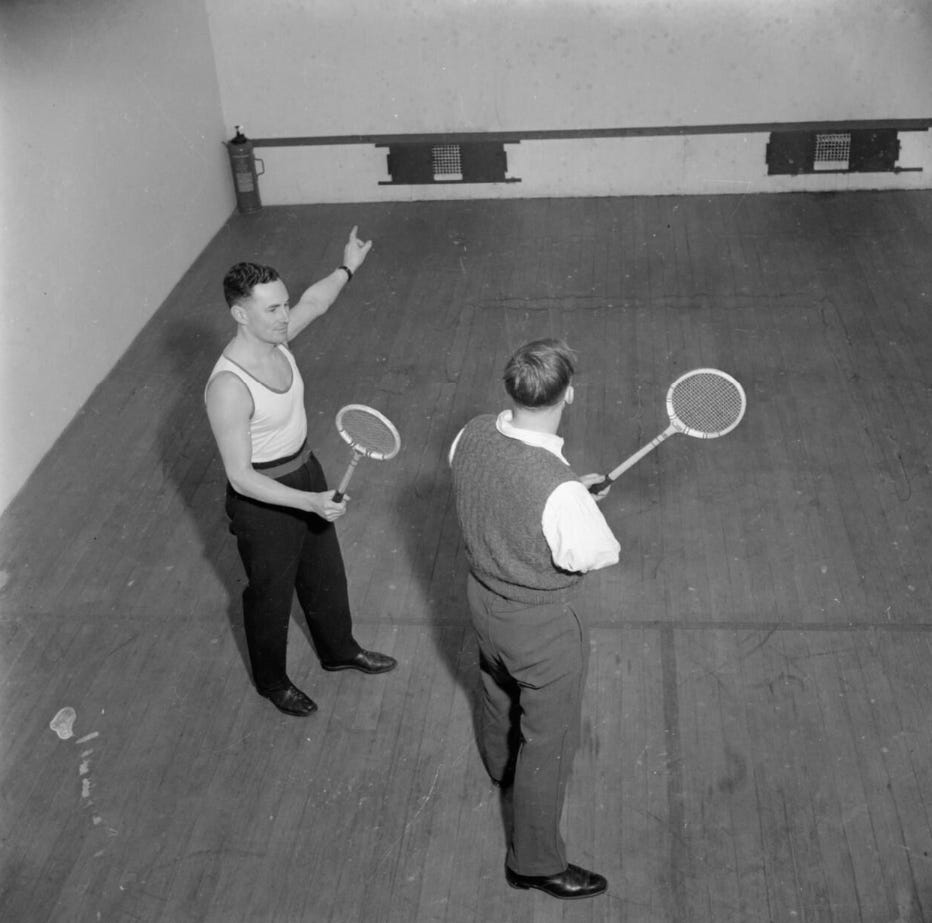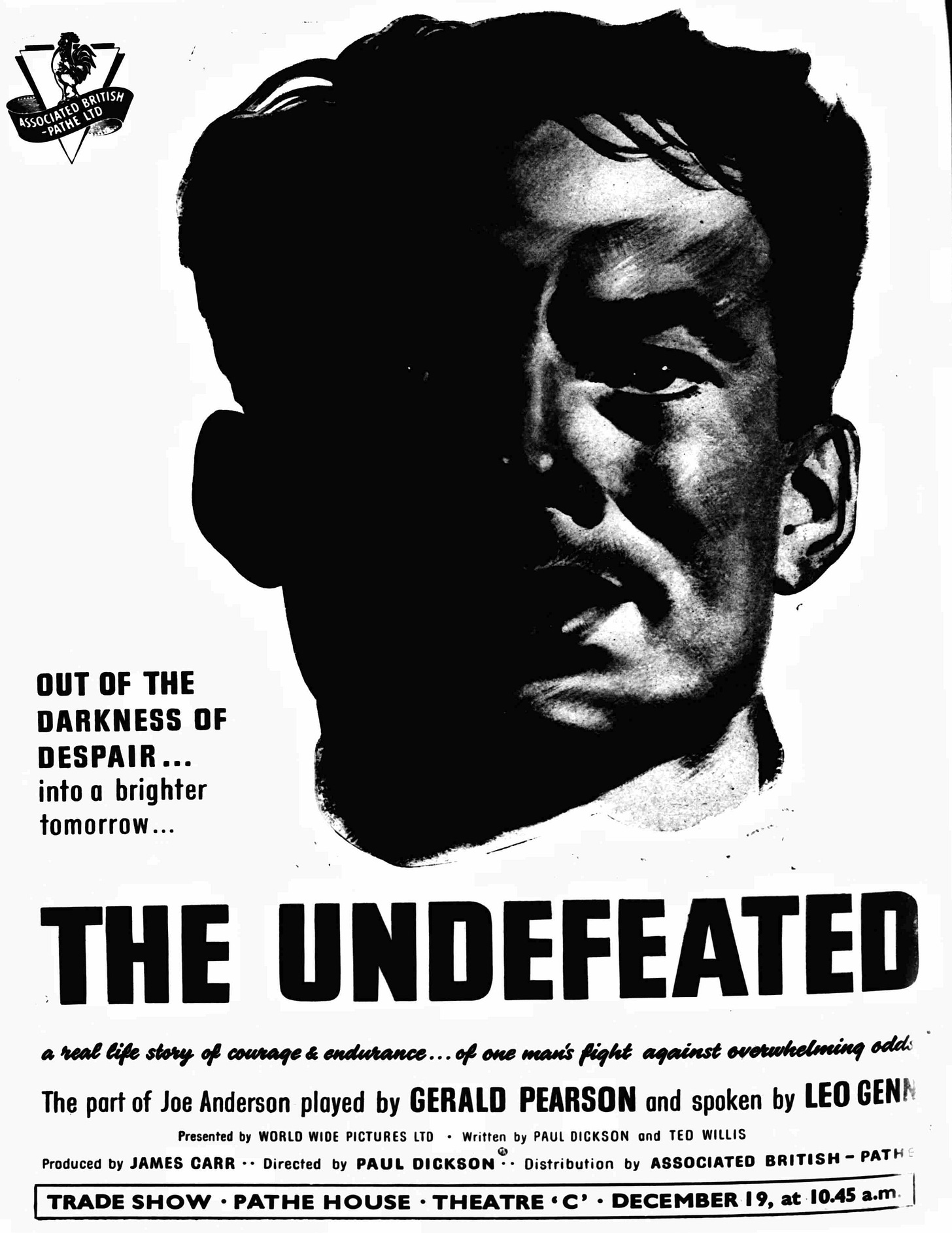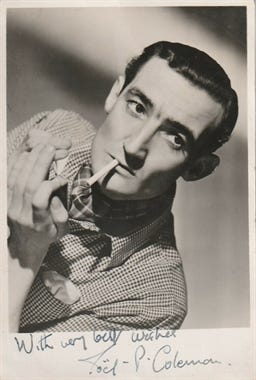The Undefeated (1951)
"Out of the darkness of despair into a brighter tomorrow." Short film on Post War amputees
“Get the others…but don’t risk moving me through the field…I’m done for anyway.” These were the words of Lt. Gerald Pearson1 laying in an Italian minefield which had taken both his legs.
Pearson was born on the day of the Armistice of the Great War, 11th November 1918, at Ootacamund [Ooty] Madras whilst his father was serving in India. His mother Emily (nee Hussey) had died in Mumbai, Maharashtra, India when he was just four years old. When he was ten he was sent to live with his grandmother at Newtonmore becoming a keen angler and bird watcher when war was declared when studying at Clare College, Cambridge University he broke from his studies to enlist with the South Wales Borderers Regiment.
In 1943 Pearson volunteered for the Army Air Corps transferring to the Parachute Regiment after making it through the Hardwick Hall Battle School and completing the required parachute jumps from balloon and planes to receive his wings at RAF Ringway. He was a Lieutenant in the 6th Bn (Royal Welch) Parachute Regiment and it was whilst serving in Italy near Monte Cassino where he lost his legs and received the Military Cross. The citation records the incident:
On 24th April at MONTE CROOCE(?) Lt. PEARSON with a patrol of 3 Royal Engineers and one Fusilier was ordered to find a gap through the minefield in front of his platoon position, in order to carry out offensive patrolling. The party entered the minefield and shortly afterwards No. 4 of the patrol was wounded by a mine. Lt. Pearson concluded that the mine detector mist be unserviceable and decided to withdraw. Almost immediately a second mine was detonated, blowing both Lt. Pearson’s legs and wound and stunning all members of the patrol.
3911012 Sgt. Jones, W.D. of Lt. Pearson’s platoon heard the explosion and immediately came to the spot, entered minefield and came to Lt. Pearson’s side. Lt. Pearson’s first words were “Get the others if you can, but don’t risk moving me through the field, both my legs are gone, and I’m done for anyway.” He then proceeded to direct the search for the other wounded members of the party.
Lt. Pearson was eventually removed from the minefield and fully conscious proceeded to indicate to the stretcher bearers the easiest route over the difficult terrain. At arrival at Platoon H.Q. and although fully aware of his terrible injuries, he maintained his outward good cheer and encourage d and heartened both wounded and rescuers. After a further carry of 1½ hours, Lt. Pearson reached Company H.Q. where he expressed his regret to Company Commander that the accident had happened. 6½ hours after the accident occurred, Lt. Pearson reached R.A.P. from where he was taken back on a mile to the A.D.S.
Seldom can such a magnificent example of courage, fortitude and stoicism have been show. I feel that his conduct is worthy of recognition.2
Pearson was conveyed from Italy back to England where he began his rehabilitation at Queen Mary's (Roehampton) Hospital, an auxiliary convalescent hospital which had been founded during First World War. The discipline of the armed forces was maintained ensuring not only the patients’ physical but mental well being to prevent their falling into despair or mire in self pity, though they had every right to.
The stress was on rehabilitation through restoring fitness for further mobility “...overdevelop what was left of their bodies.” Learn daily living skills whilst combating depression through purposeful activity. This is described in The Undefeated as growing “…tough in their attitude of mind” with one doctor referring to this as “..the mentality of the patient that counts in the end. They’re afraid of so many things insecurity, being a burden…even afraid they may not find a flat on the ground floor. They get depressed at times and blame everyone for not doing enough we want them to face things now before they get outside. To learn how to meet them and thus build up the will to win.”
Rehabilitation of patients through relearning tasks whilst using their new prosthetics to do the things they once did without thinking, as well reacquainting themselves with recreation from smoking, to swimming and squash through these exercises they could depend on their independence and find gainful employment after they left.




After the war Pearson married on his new tin prosthetic legs, enlisted in the civil service becoming an official in the board of trade where he would be dragged into the Lynskey Inquiry when “businessman” Sidney Stanley’s influence on government was being investigated which included John Belcher whom Pearson was his private secretary at the time.
The Undefeated (1951)
The Undefeated was a Central Office of Information film produced by World Wide Pictures which was written and directed by Paul Dickson who served in the in the Royal Artillery as an anti-aircraft gunner in Algiers and Italy. Nearing the end of the war he transferred to the Army Film & Photographic Unit training as a combat cameraman at Pinewood and would direct army films Personal Hygiene (1948) and The Craftsman (1948) Dickson explains the process of the film in an interview with Rodney Giesler back in 2004:
Its original purpose, it was made by the Ministry of Pensions to show the work they were doing to rehabilitate the wounded soldiers from both wars…We persuaded them to allow us to sort of centre it on an individual who had a double amputation above the knee…so that was the sort of central storyline how he progressed and the script was written by Ted Willis. We found a wonderful real soldier who had lost his legs…he was marvellous we were very fortunate…The scenes with him were mostly at Roehampton [hospital] except for a scene which we had to stage a scene where the aircraft where he lost his legs had crashed which we had as a location…a lot of the other material on the screen was taken from journeys we made from other hospitals to see other aspects of care given.3
Leon Genn4 was chosen to the narrate the film whose calm tones carry the viewer through the picture. Though the war was over many were still dealing with the effects of their wounds from both World Wars which was why Pearson had come to the producer’s attention "I am no glamourous film star...I was picked for the part because my name was first to come out of the Ministry files with the necessary qualifications."
Pearson’s only experience in acting was amateur dramatics at Cambridge University. The story concerned Sgt. Joe Anderson, a young glider pilot, injured and severely wounded on Operation Varsity crossing the Rhine losing both legs and power of speech then becomes an active member of the community once more.
Also making an appearance in the film was Reverend G.L. Treglown who had lost his sight and hand when during an exercise before D-Day a stick of gelignite fell into a ditch he and his men were in and whilst attempting to throw it away when it exploded.
Pearson’s co-pilot ‘Lofty’ was played by actor Noel Philip Coleman5 whom later became the narrator of Captain Pugwash began treading the boards at Vaughan College, Leicester where Richard Attenborough began his acting.
On a tight budget for a short film Dickson utilised various archive footage of gliders filmed being towed during the war illustrating the largess of the operation which included scenes of the 6th Airborne Division being waved off on the 24th March 1945. The footage also shows the detritus of crashed gliders, aircraft and discarded parachutes, the 6th Airborne Division and Glider Pilot Regiment lost a thousand killed and wounded on the operation.
The Glider Pilot Regiment was still in operation after the war enabling Dickson and the crew to recreate a flight filming interior shots of Pearson in the glider in mid flight adding further realism to the picture. The crash is also lifelike which would be reminiscent to many glider pilots and their passengers. Lofty is shown trapped in a glider with a helpless Joe exclaiming “Lofty! I can't move...” creating the necessary pathos. Either the set dressing have gone to great lengths to recreate the crashed Horsa glider with trapped jeep and scattered gas cannisters or an existing training crash was used.
The film nicely flows from dramatisation to documenting the great lengths gone to help the injured. Showing the likes of rest homes in Eastbourne for the paralysed emphasising the need for the injured to find independence with the use of “motor chairs” and converted cars with hand controls. Focusing on the lows and highs of ‘Joe Anderson’s’ rehabilitation his struggle mentally and physically it gives an idea what disciplines were available to those who have been disfigured, blinded or severely injured that their disability is not end of their future and further illustrated by previous patients filmed going about their jobs and recreation.
The film was well received by audiences and a success being referred to as an “epic in miniature”, “moving” and a “sincere story” premiered in 1950 at the House of Commons which included in the audience Prime Minister Clement Attlee who patted Pearson on the back and told him "Congratulation- a wonderful performance!".
The film received an Oscar nomination and awarded Bronze Bear at the first Berlin Film festival as well as being awarded the British Film Academy award for Best Documentary of the Year. The success was in part due to dramatising the experience of amputees rather than as an observational documentary which is what led to its commercial distribution. It is rare for Short Films to be remembered though they do help writers, directors and cameramen’s careers directors like Martin Brest (Hot Dogs for Gaugin, 1972), Martin Scorsese and Steven Spielberg. This is what The Undefeated did for Dickson who was shown to be an accomplished writer and director.
One can see why The Undefeated received the accolades it did, it’s entertaining, engaging, a show of overcoming struggle, informative and hopeful, gripping the viewer who has a fuller understanding by the end of the film of the endeavours achieved and ongoing.
This was Pearson’s only acting part, he returned to the board of trade as a commissioner to at the Embassy in Ireland [1959-1967] as a counsellor at the embassy in The Hague, Netherlands [1967-1971] then at the Permanent mission in Geneva 1971 and died in 1978.
N.B. The clips were found on Getty but unfortunately The Undefeated is not available on BFI Player but it is featured on the DVD Land of Promise and you can get a copy of it at the BFI Shop.
Lt. Gerald Lionel Pearson, 6th Bn (Royal Welsh) Parachute Regiment (Service Number 103095)
WO 373/8/66 Military Cross Citation
Paul Dickson interview History Project by Rodney Giesler (25th September 2004)
Only a few years before Genn was investigating Belsen Concentration camp
May have been a Chindit during the war









